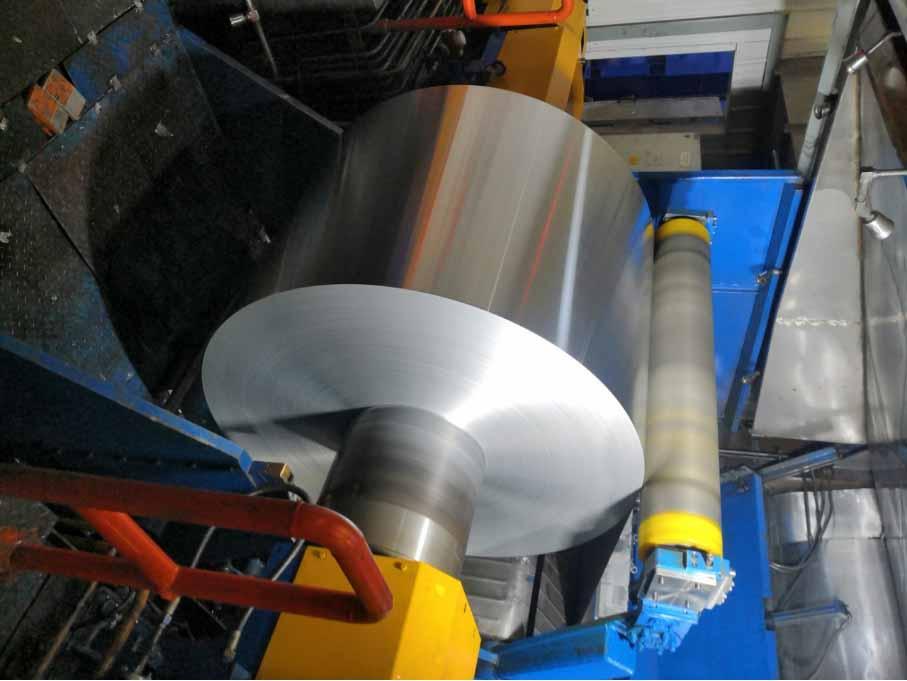Produzione di alta qualità 8011 foglio di alluminio comporta un processo di produzione preciso e controllato. Dalla selezione delle materie prime al confezionamento, ogni passaggio contribuisce alle prestazioni e all'affidabilità del prodotto finale. Seguendo questi 8 passi, 8011 i produttori di fogli di alluminio possono produrre 8011 aluminum foil that meets the stringent requirements of various industries, including food packaging, prodotti farmaceutici, and household applications.

The production process of aluminum foil 8011
Fare un passo 1: Raw Material Selection and Preparation
To produce high-quality 8011 foglio di alluminio, it is crucial to start with the right raw materials. Select aluminum ingots with a high purity level, tipicamente 99.7% or above, ensuring the desired properties in the final product. The ingots are then melted in a furnace to create a molten aluminum bath.
Fare un passo 2: Colata continua
The molten aluminum is poured into a continuous casting machine, where it is solidified into thin slabs. The continuous casting process helps achieve a uniform thickness and ensures the elimination of impurities.
Fare un passo 3: Laminazione a caldo
The solidified slabs are reheated and passed through a series of hot rolling mills. The rolling process reduces the thickness of the aluminum, resulting in a coil of semi-finished aluminum foil known as a "hot-rolled coil." The temperature, rolling speed, and reduction rate are carefully controlled to achieve the desired thickness and mechanical properties.
Fare un passo 4: Laminazione a freddo
The hot-rolled coil is then subjected to cold rolling, which further reduces the thickness and enhances the surface quality of the aluminum foil. The cold rolling process involves multiple passes through a series of rolling mills, gradually reducing the thickness to the required specifications. Intermediate annealing may be performed between passes to improve the material's formability and remove any residual stresses.

Cold Rolling Of 8011 foglio di alluminio
Fare un passo 5: Annealing and Final Rolling
After cold rolling, the aluminum foil is annealed to restore its ductility and eliminate any work hardening. The foil is heated to a specific temperature and held for a certain duration, followed by controlled cooling. This annealing process ensures the foil remains flexible and easy to handle during subsequent processing. Once annealed, the foil undergoes final rolling to achieve the desired thickness, morbidezza, and uniformity.
Fare un passo 6: Finishing Processes
After the final rolling, the aluminum foil is subjected to various finishing processes to meet specific requirements. These processes may include trimming the edges, slitting the foil into desired widths, and winding the foil into rolls of suitable lengths.
Fare un passo 7: Quality Control and Testing
Throughout the production process, strict quality control measures are implemented to ensure the foil meets the required standards. Physical and mechanical tests, such as thickness measurement, tensile strength evaluation, and surface inspection, are conducted to verify the foil's quality and performance.

Quality Control and Testing Of 8011 foglio di alluminio |

Quality Control and Testing of aluminum 8011 Foglio |
Fare un passo 8: Packaging and Distribution
Once the 8011 foglio di alluminio passes the quality tests, it is carefully packaged to protect it from damage during transportation and storage. The foil rolls are usually packed in moisture-resistant packaging materials and labeled with relevant information such as specifications, batch number, and manufacturing date. The packaged foil rolls are then distributed to customers and end-users.

Packaging and Distribution of 8011 alloy aluminium foil
